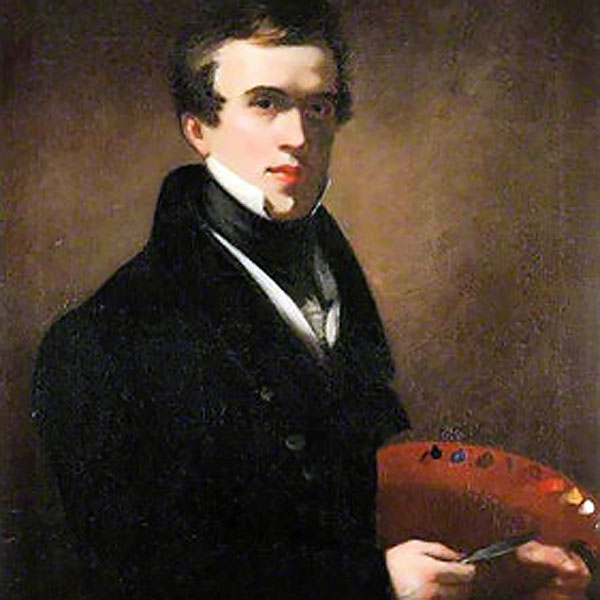John Scarlett Davis, 1804–1845
Artist
John Scarlett Davis was born above his father’s clockmakers shop in the High Street, Leominster.
From an early age he showed talent as a painter and went to London for further training.
He later travelled extensively in this country and Europe producing portraits and landscapes, but his life was dogged by financial troubles and he died aged just 41.

The Davis family moved to Leominster from South Wales in the 16th Century. In 1800 James Davis married Ann Scarlett — a member of the Scarlett family of Yarpole — amongst the leading members of the local gentry. The couple settled in the High Street, Leominster, where James opened a clockmakers shop.
The second of their five children, John, was born here in 1804 and soon showed his artistic gifts. By the age of 12 was described as a ‘young self-taught genius’. He had lessons from David Cox, the landscape watercolourist, and at just 13 went to London to attend the Royal Academy Schools. He studied portraiture under Sir Thomas Lawrence (the famous portrait painter).
Davis became a professional artist, specialising in commissions for portraits and landscapes. This was the end of the period of “The Grand Tour” when wealthy young men would travel through Europe and particularly Italy, to develop their appreciation of the arts and “The Antique“. To meet the demand for paintings to remind them of their journey Davis travelled to Italy, and produced some wonderful watercolours. His work was admired by Turner, the greatest English watercolourist, but the trip was not a financial success and on his return he was arrested for debt and briefly imprisoned.
He accepted the patronage of John Hinxman, a wealthy merchant and returned to Europe, where he painted the 9 feet long oil painting “The Interior of St. Peters’. This picture is now in the possession of Hereford Museum.
Davis did not enjoy commercial success in his lifetime. It could be said that his devotion to the importance of classical training was his undoing, as he did not change to suit Victorian ideals. Indeed his friend, Joseph Murray lnce, of Presteigne, a more saccharine artist who pandered to the early Victorian taste for the picturesque, was much more successful.
The financial problems he faced and the constant travelling eventually affected his health, the difference in his appearance between earlier self-portraits to his final work are striking. He died in 1845, aged only 41 of ‘diseased lungs”.
It was unfortunate that his reputation, both as a man and as a painter, was adversely affected by an inaccurate entry in a dictionary of English artists originally published in 1873. Unfortunately, attempts to correct the errors were not as widely circulated as the book and the errors persisted. Almost forgotten, his reputation plummeted, and years of neglect followed. However a reappraisal of his work, and a new biography, has corrected some of the wrongs and Scarlett Davis has now taken his place among the finest artists of his period.
The final judgement must be of his work. As the examples on display in the gallery of Leominster museum show, it is as fresh and vibrant today as when he produced it.

